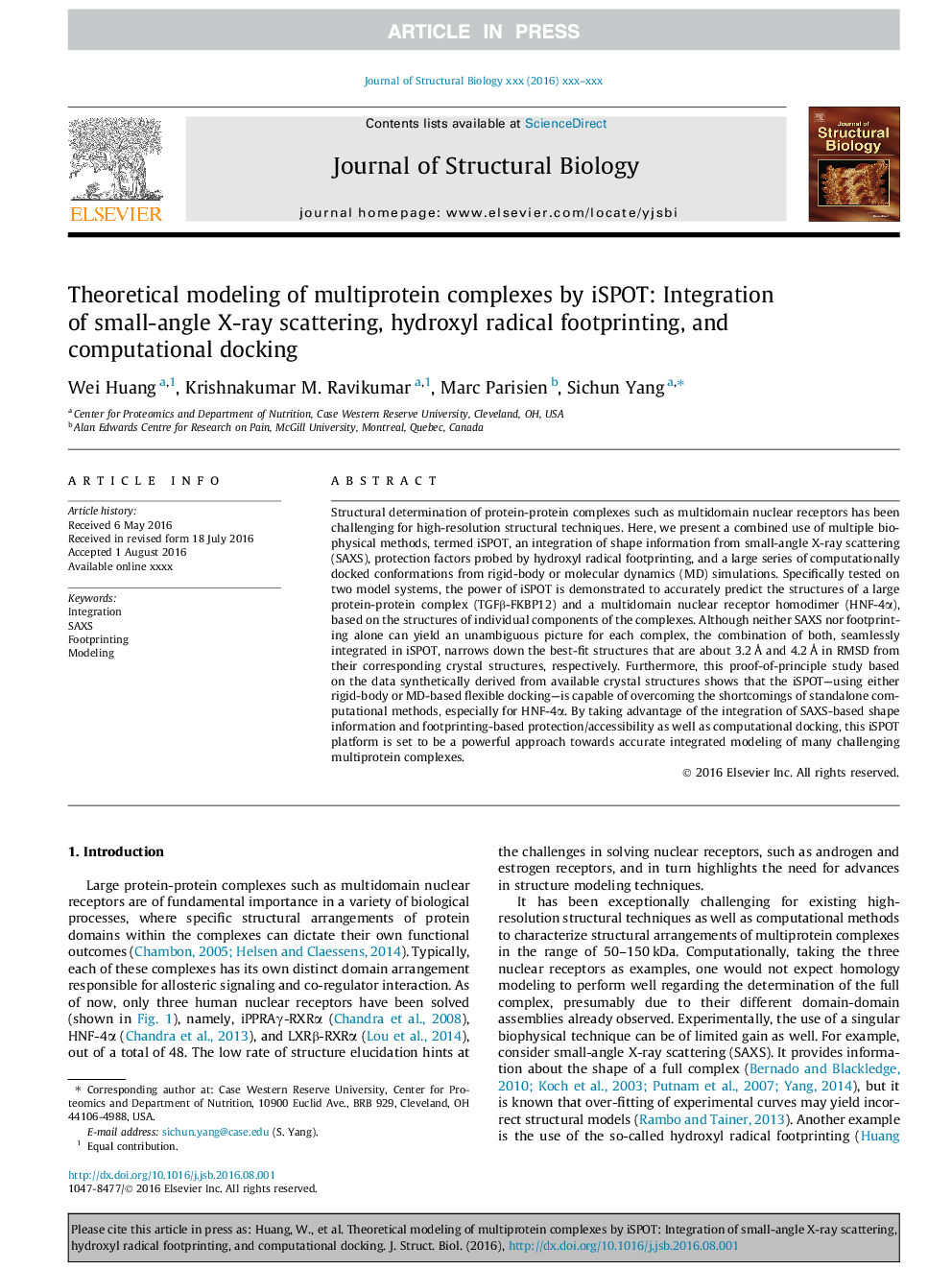| Article ID | Journal | Published Year | Pages | File Type |
|---|---|---|---|---|
| 5591650 | Journal of Structural Biology | 2016 | 10 Pages |
Abstract
Structural determination of protein-protein complexes such as multidomain nuclear receptors has been challenging for high-resolution structural techniques. Here, we present a combined use of multiple biophysical methods, termed iSPOT, an integration of shape information from small-angle X-ray scattering (SAXS), protection factors probed by hydroxyl radical footprinting, and a large series of computationally docked conformations from rigid-body or molecular dynamics (MD) simulations. Specifically tested on two model systems, the power of iSPOT is demonstrated to accurately predict the structures of a large protein-protein complex (TGFβ-FKBP12) and a multidomain nuclear receptor homodimer (HNF-4α), based on the structures of individual components of the complexes. Although neither SAXS nor footprinting alone can yield an unambiguous picture for each complex, the combination of both, seamlessly integrated in iSPOT, narrows down the best-fit structures that are about 3.2 Ã
and 4.2Â Ã
in RMSD from their corresponding crystal structures, respectively. Furthermore, this proof-of-principle study based on the data synthetically derived from available crystal structures shows that the iSPOT-using either rigid-body or MD-based flexible docking-is capable of overcoming the shortcomings of standalone computational methods, especially for HNF-4α. By taking advantage of the integration of SAXS-based shape information and footprinting-based protection/accessibility as well as computational docking, this iSPOT platform is set to be a powerful approach towards accurate integrated modeling of many challenging multiprotein complexes.
Keywords
Related Topics
Life Sciences
Biochemistry, Genetics and Molecular Biology
Molecular Biology
Authors
Wei Huang, Krishnakumar M. Ravikumar, Marc Parisien, Sichun Yang,
